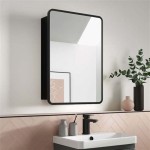MirrorLink, Apple AirPlay, and Samsung Smart TVs: A Comparative Analysis
The integration of mobile devices with in-car infotainment systems and smart televisions has become increasingly prevalent. Technologies like MirrorLink, Apple AirPlay, and proprietary solutions from Samsung represent distinct approaches to achieving this connectivity. This article will explore each technology, outlining their functionalities, compatibility, advantages, and disadvantages, with a specific focus on their application in mirroring content to Samsung Smart TVs.
MirrorLink: An Overview of the Automotive Standard
MirrorLink is a technology standard developed by the Car Connectivity Consortium (CCC) for mirroring the screen of a smartphone onto a car's infotainment system. Its primary goal is to allow drivers to safely access and interact with smartphone applications while driving. The standard defines protocols for communication between the smartphone and the head unit, enabling the user interface of the mobile device to be displayed on the in-car screen. This functionality extends to controlling certain aspects of the phone, such as playing music, navigating using GPS, and making phone calls, through the car's interface.
The core concept behind MirrorLink is to leverage the processing power and application ecosystem of the smartphone, rather than relying on the car's built-in system for complex functionalities. This approach allows for regular updates to applications and services, ensuring that the car's system remains current without requiring costly hardware upgrades. However, MirrorLink's development has faced challenges in gaining widespread adoption due to various factors, including limited manufacturer support, fragmentation across different Android versions, and the emergence of competing technologies such as Android Auto and Apple CarPlay.
While MirrorLink is primarily designed for automotive use, attempts have been made to extend its functionality to other display devices, including televisions. However, the standard's inherent focus on driver safety and its complex implementation haven't made it a natural fit for smart TV integration. The automotive-centric features, such as voice control and simplified user interfaces, are less relevant in a home entertainment context.
Apple AirPlay: Seamless Integration within the Apple Ecosystem
AirPlay is Apple's proprietary wireless streaming protocol designed for sharing audio and video content between Apple devices. It allows users to stream music, photos, and videos from their iPhones, iPads, and Macs to compatible devices, including Apple TVs and, increasingly, smart TVs from various manufacturers, including Samsung. AirPlay utilizes a combination of Wi-Fi and Bluetooth to establish a connection and transmit data, providing a relatively seamless and user-friendly experience within the Apple ecosystem.
Unlike MirrorLink, AirPlay offers both mirroring and streaming capabilities. Mirroring allows for displaying the entire screen of an iOS device or Mac onto the television, effectively turning the TV into a large external display. Streaming, on the other hand, allows specific content, such as a movie or a song, to be sent to the TV without mirroring the entire screen. This functionality is particularly useful for multitasking, as the user can continue using their device for other tasks while the content plays on the TV.
AirPlay's tight integration with Apple devices is a significant advantage. Because it's a native protocol within iOS and macOS, there's no need to download or install any additional applications to use AirPlay. The user interface is also intuitive and consistent across different devices, making it easy to discover and use AirPlay's features. This ease of use contributes significantly to its widespread adoption, particularly among users deeply invested in the Apple ecosystem.
However, AirPlay is inherently limited to Apple devices. While some third-party applications on platforms like Android may attempt to replicate AirPlay's functionality, they often lack the seamless integration and reliability of the original protocol. This limitation can be a significant drawback for users who primarily use Android devices or who have a mixed ecosystem of devices.
Samsung Smart TVs: Proprietary Solutions and AirPlay 2 Integration
Samsung Smart TVs utilize their own proprietary technologies for screen mirroring and content sharing, such as Smart View. Smart View allows users to mirror their Samsung Galaxy smartphones and tablets to the TV, as well as control the TV using their mobile devices. This functionality is deeply integrated into Samsung's ecosystem, providing a similar level of seamlessness as AirPlay within the Apple environment.
However, Samsung has also actively embraced AirPlay 2 in recent years. This integration means that users of Apple devices can natively stream content to compatible Samsung Smart TVs without needing any additional hardware or software. This partnership between Samsung and Apple represents a significant step towards interoperability, allowing users from both ecosystems to benefit from the convenience of wireless streaming. This AirPlay 2 integration directly addresses the limitation of Apple's technology being exclusive to its own devices.
Beyond AirPlay 2, Samsung's Smart TVs offer a range of connectivity features, including Bluetooth, Wi-Fi, and HDMI ports. These options provide flexibility for connecting various devices, from smartphones and tablets to gaming consoles and Blu-ray players. The Tizen operating system, which powers Samsung Smart TVs, also supports a wide range of streaming applications, such as Netflix, Amazon Prime Video, and YouTube, further enhancing the capabilities of the television.
Samsung's approach to smart TV functionality involves a combination of proprietary technology and open standards. While their own solutions like Smart View are designed to provide a seamless experience for Samsung device users, the integration of AirPlay 2 demonstrates a commitment to supporting a wider range of devices and platforms. This hybrid approach allows Samsung to cater to a diverse user base while maintaining control over the core functionalities of their smart TVs.
The compatibility of these technologies with Samsung Smart TVs varies. MirrorLink, while theoretically possible through third-party applications, is not a primary focus for Samsung's smart TV platform. The automotive-centric nature of MirrorLink makes it less relevant in a home entertainment environment compared to AirPlay 2 and Samsung's own Smart View. AirPlay 2, on the other hand, is natively supported on many recent Samsung Smart TV models, allowing for seamless streaming from Apple devices. Samsung’s Smart View, naturally, works best with Samsung mobile devices.
Consider the features each system offers beyond basic mirroring. AirPlay supports multi-room audio, allowing users to stream music to multiple AirPlay-compatible speakers throughout their home. This feature is particularly valuable for creating a synchronized audio experience. Samsung's Smart View also provides functionalities like controlling the TV with a mobile device and accessing content from the TV on the mobile device, expanding the interaction beyond simple screen mirroring. The specific features available depend on the TV model and the version of the software.
Security is a critical aspect of wireless streaming technologies. AirPlay uses encryption to protect the content being transmitted, ensuring that it cannot be intercepted by unauthorized users. Samsung's Smart View also incorporates security measures to prevent unauthorized access to the television and its connected devices. Understanding the security protocols used by each technology is important for protecting personal information and preventing potential security breaches. Consider the network security of the Wi-Fi you are using also.
In summary, MirrorLink, Apple AirPlay, and Samsung Smart TVs represent different approaches to achieving connectivity between mobile devices and display devices. MirrorLink, primarily designed for automotive use, faces challenges in broader application. AirPlay offers seamless integration within the Apple ecosystem, while Samsung Smart TVs combine proprietary solutions with AirPlay 2 integration to cater to a wider range of users. The choice of technology depends on the user's device ecosystem, their specific needs, and the features and capabilities of their television.

How To Connect Phone Tv Screen Mirror Iphone A Samsung Easy Setup

Effective How To Mirror Iphone Samsung Tv Airdroid

How To Mirror An Ipad A Samsung Tv

Effective How To Mirror Iphone Samsung Tv Airdroid

4 Easy Ways To Mirror Iphone Samsung Tv For Free

Iphone Ipad Streamen Naar Samsung Tv Met Screen Mirroring

Screen Mirroring Apps Iphone Ipad Android Mac Airbeamtv

What Is Screen Mirroring And How Do I Use It With My Samsung Tv Mobile Device

Mirror Iphone To Samsung Tv No Apple Needed

How To Mirror Your Iphone Screen On Samsung Smart Tv








